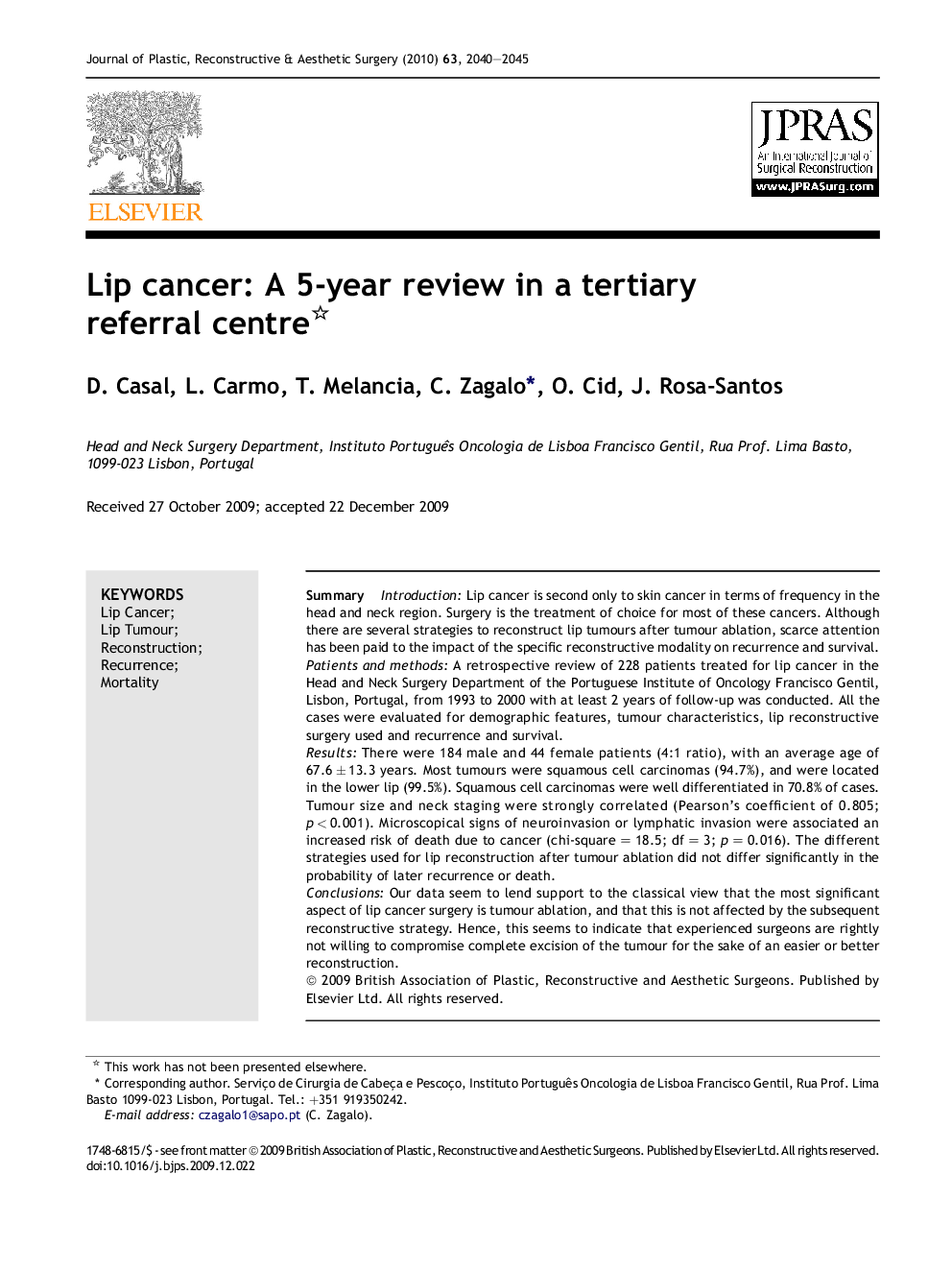| Article ID | Journal | Published Year | Pages | File Type |
|---|---|---|---|---|
| 4119369 | Journal of Plastic, Reconstructive & Aesthetic Surgery | 2010 | 6 Pages |
SummaryIntroductionLip cancer is second only to skin cancer in terms of frequency in the head and neck region. Surgery is the treatment of choice for most of these cancers. Although there are several strategies to reconstruct lip tumours after tumour ablation, scarce attention has been paid to the impact of the specific reconstructive modality on recurrence and survival.Patients and methodsA retrospective review of 228 patients treated for lip cancer in the Head and Neck Surgery Department of the Portuguese Institute of Oncology Francisco Gentil, Lisbon, Portugal, from 1993 to 2000 with at least 2 years of follow-up was conducted. All the cases were evaluated for demographic features, tumour characteristics, lip reconstructive surgery used and recurrence and survival.ResultsThere were 184 male and 44 female patients (4:1 ratio), with an average age of 67.6 ± 13.3 years. Most tumours were squamous cell carcinomas (94.7%), and were located in the lower lip (99.5%). Squamous cell carcinomas were well differentiated in 70.8% of cases. Tumour size and neck staging were strongly correlated (Pearson's coefficient of 0.805; p < 0.001). Microscopical signs of neuroinvasion or lymphatic invasion were associated an increased risk of death due to cancer (chi-square = 18.5; df = 3; p = 0.016). The different strategies used for lip reconstruction after tumour ablation did not differ significantly in the probability of later recurrence or death.ConclusionsOur data seem to lend support to the classical view that the most significant aspect of lip cancer surgery is tumour ablation, and that this is not affected by the subsequent reconstructive strategy. Hence, this seems to indicate that experienced surgeons are rightly not willing to compromise complete excision of the tumour for the sake of an easier or better reconstruction.
